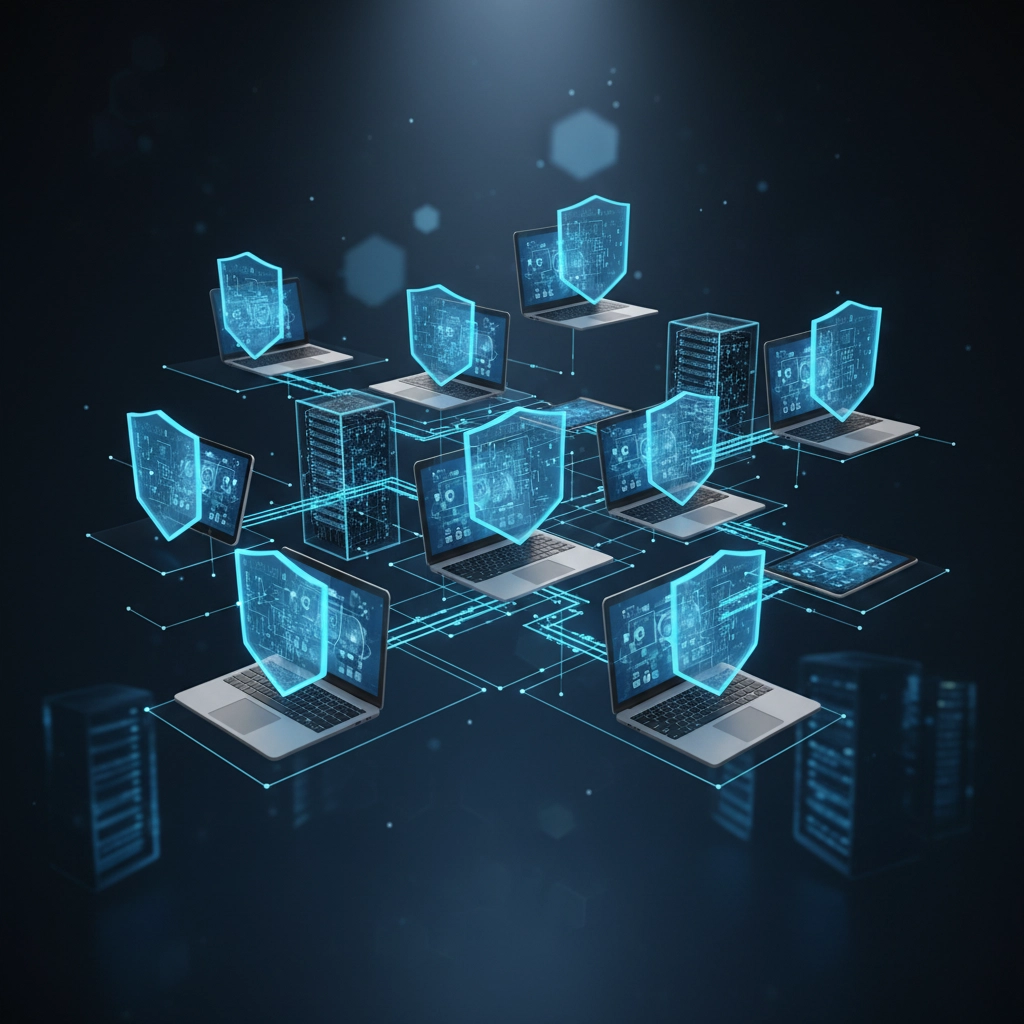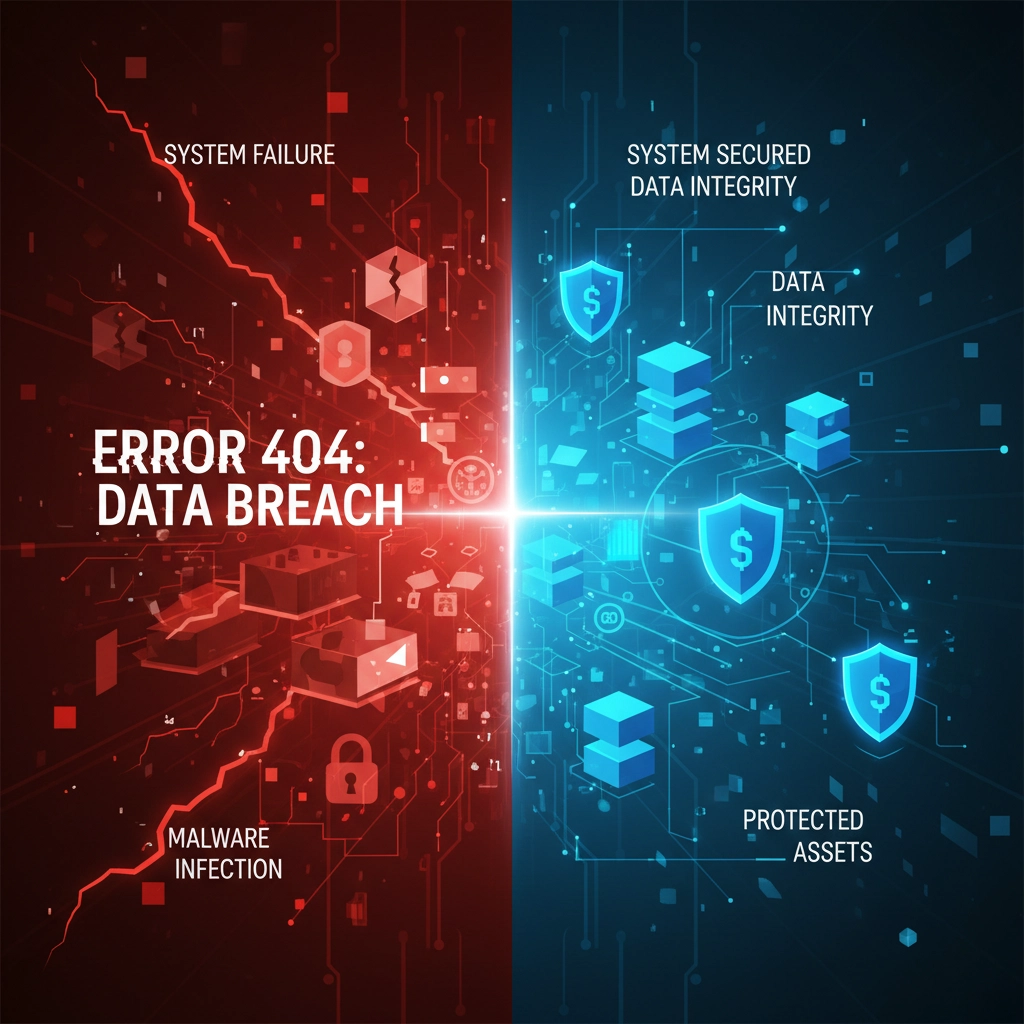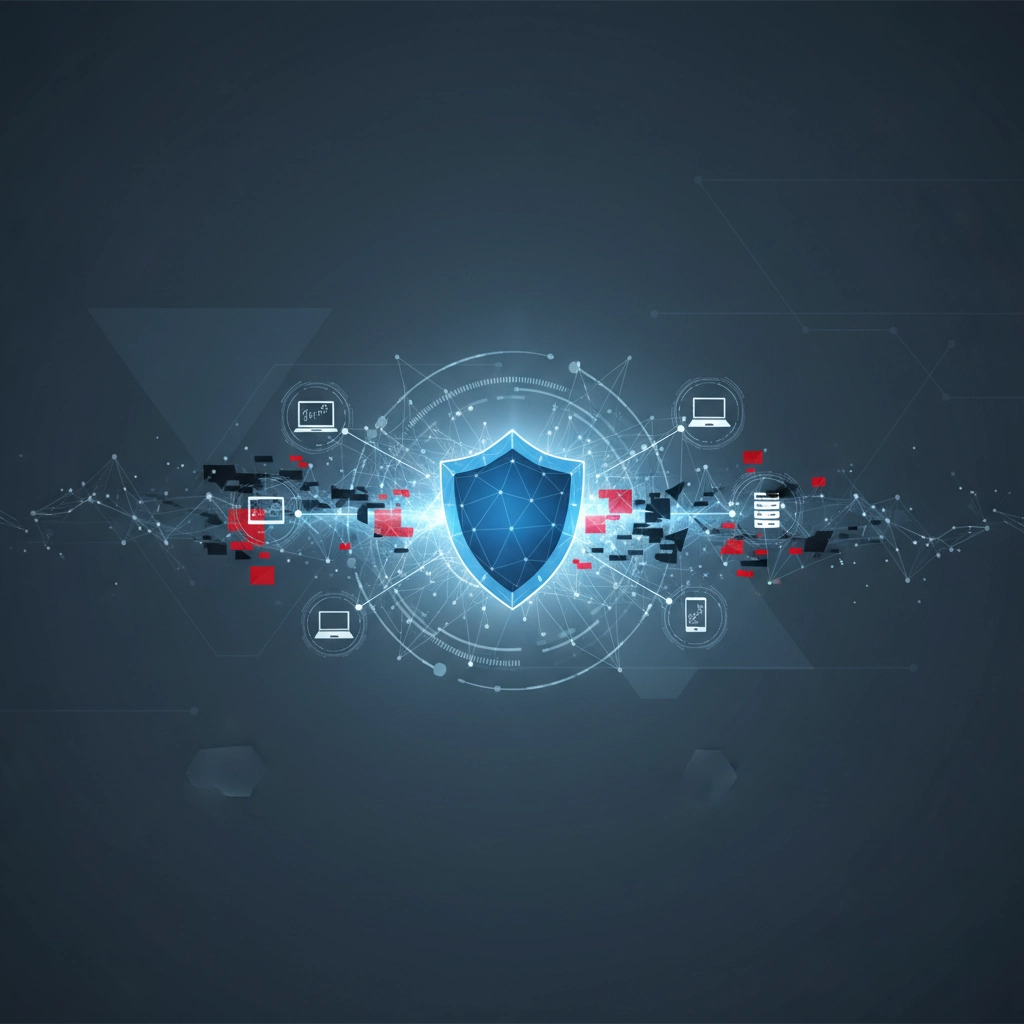Did you know that cybercriminals spend an average of 287 days inside a network before being detected? That's nearly 10 months of unrestricted access to your business data, customer information, and financial records. For small and medium businesses, this statistic isn't just alarming, it's potentially business-ending.
The numbers don't lie: 43% of cyberattacks target small businesses, yet most SMBs still rely on basic antivirus software that's about as effective as a screen door on a submarine when facing today's sophisticated threats.
So, what's the solution? Enter Endpoint Detection and Response (EDR), your business's digital bodyguard that never sleeps, never takes a coffee break, and never misses a suspicious activity.
What Exactly Is EDR?
Think of EDR as a security camera system, but instead of watching your physical premises, it's monitoring every device connected to your network 24/7. EDR stands for Endpoint Detection and Response, and it's a cybersecurity technology that continuously monitors all your endpoints, laptops, desktops, mobile phones, servers, and even those smart office devices, to detect, investigate, and respond to threats in real-time.
Unlike your traditional antivirus that works like a bouncer checking IDs at the door (only recognizing known troublemakers), EDR is more like a seasoned detective. It watches behavior patterns, notices when something seems off, and takes action before the threat can cause damage.

Here's what makes EDR different: while traditional antivirus relies on a "blacklist" of known bad actors, EDR uses advanced behavioral analysis to spot threats that have never been seen before. It's the difference between having a security guard who only knows yesterday's criminals versus one who can spot suspicious behavior as it happens.
How Does EDR Actually Work?
EDR operates through a sophisticated four-step process that would make any detective proud:
1. Continuous Data Collection
EDR agents installed on each device continuously collect information about running processes, network connections, file changes, and user behaviors. Think of it as your business's digital memory, it remembers everything that happens on every connected device.
2. Smart Detection
Using machine learning and behavioral analytics, EDR analyzes all this collected data to identify anomalies. When a process starts behaving unusually, like when accounting software suddenly tries to access HR files at 3 AM, EDR raises a red flag.
3. Automated Response
Here's where EDR really shines. The moment suspicious activity is detected, it can automatically take action. This might mean isolating an infected device from the network, terminating malicious processes, or blocking suspicious network connections, all without human intervention.
4. Investigation and Analysis
After containing a threat, EDR provides detailed forensic data, including attack timelines, affected systems, and indicators of compromise. This information is crucial for understanding how the attack happened and preventing future incidents.
Why Your SMB Needs EDR Yesterday
Let's address the elephant in the room: "We're a small business, who would want to attack us?" Unfortunately, that's exactly why cybercriminals love targeting SMBs. You have valuable data but often lack the robust security infrastructure of larger enterprises.
Real-Time Threat Detection That Actually Works
EDR provides continuous monitoring that catches threats within minutes or hours, not months. According to IBM's Cost of a Data Breach Report, organizations with advanced detection and response capabilities identify breaches 200+ days faster than those without.
When ransomware tries to encrypt your files, EDR doesn't wait for you to notice your desktop background has changed to a ransom note. It spots the unusual file encryption activity and stops it immediately.
Dramatically Reduced "Dwell Time"
Remember that 287-day statistic? EDR slashes that number dramatically. The faster you detect and respond to threats, the less damage they can cause. It's like catching a small kitchen fire before it burns down your house versus dealing with the aftermath of total destruction.

Protection Against Unknown Threats
Here's where EDR really flexes its muscles. While traditional antivirus might miss a brand-new strain of malware, EDR watches for suspicious behaviors. If a file starts encrypting everything in sight (classic ransomware behavior), EDR stops it, even if it's never seen that specific malware before.
Remote Work Security
With employees working from coffee shops, home offices, and client locations, your network perimeter has essentially disappeared. EDR provides security that travels with your devices, ensuring protection regardless of location.
EDR vs. Traditional Antivirus: The Security Showdown
Let's settle this once and for all. Traditional antivirus is like having a list of known criminals at your front door, useful, but limited. It can only catch threats it already knows about, leaving you vulnerable to new attacks.
EDR, on the other hand, is like having a behavioral analyst who notices when someone's acting suspiciously, even if they're not on any wanted list. Here's the breakdown:
Traditional Antivirus:
- Signature-based detection (knows yesterday's threats)
- Focuses on prevention only
- Limited visibility into what's happening
- Reactive approach
EDR:
- Behavioral analysis (spots new and unknown threats)
- Detection, investigation, and response
- Complete visibility into all endpoint activities
- Proactive threat hunting
Real-World Scenarios: EDR in Action
Scenario 1: The Stealthy Ransomware
A sophisticated ransomware variant infiltrates your network through a phishing email. Traditional antivirus doesn't recognize it because it's brand new. However, EDR immediately notices unusual file encryption patterns and automatically isolates the affected machine, preventing the ransomware from spreading to your entire network.
Scenario 2: The Insider Threat
An employee's credentials are compromised, and a cybercriminal uses them to access your systems. Since the access appears legitimate, traditional security measures don't flag it. EDR, however, notices unusual access patterns, like accessing sensitive files outside normal business hours or downloading unusually large amounts of data, and raises an alert.
Scenario 3: The Supply Chain Attack
Malware infiltrates your systems through a trusted third-party software update. This "living off the land" attack uses legitimate tools for malicious purposes. EDR detects the abnormal behavior patterns and stops the attack before sensitive data is exfiltrated.

The Business Impact: Beyond Just Security
EDR isn't just about preventing cyber attacks, it's about protecting your business continuity and bottom line. Consider these benefits:
Reduced Downtime
Quick threat detection and response means less disruption to your operations. When EDR stops a threat in its tracks, your employees can keep working instead of dealing with system rebuilds and data recovery.
Compliance Made Easier
Many regulations require businesses to demonstrate adequate cybersecurity measures. EDR provides the monitoring, logging, and incident response capabilities that auditors love to see.
Customer Trust
In an era where data breaches make headlines daily, having robust cybersecurity measures like EDR demonstrates to your customers that you take their data protection seriously.
Cost Savings
The average cost of a data breach for small businesses is $2.98 million. Compare that to the cost of EDR implementation, and the ROI becomes crystal clear.
Is EDR Right for Your Business?
You might be wondering, "This sounds great, but is it overkill for my business?" The answer depends on a few key questions:
- Do you handle sensitive customer data?
- Would a day or more of downtime significantly impact your operations?
- Do your employees work remotely or travel with company devices?
- Are you in a regulated industry with compliance requirements?
If you answered "yes" to any of these questions, EDR should be a priority. The reality is that cyber threats don't discriminate based on company size: they target valuable data and vulnerable systems, regardless of whether you have 10 employees or 10,000.
Getting Started with EDR
The good news? You don't need to become a cybersecurity expert overnight. Many EDR solutions are designed specifically for SMBs, offering enterprise-grade protection without the complexity.
When evaluating EDR solutions, look for:
- Automated response capabilities
- Easy-to-understand dashboards and alerts
- Integration with your existing security tools
- Scalability as your business grows
- 24/7 monitoring and support
Your Next Step in Cybersecurity
The cyber threat landscape isn't getting any friendlier, and hoping that you'll fly under the radar isn't a strategy: it's a recipe for disaster. EDR represents a fundamental shift from hoping threats won't find you to proactively hunting them down and stopping them in their tracks.
Don't wait until you're dealing with encrypted files and ransom demands to take action. The best time to implement EDR was yesterday; the second-best time is right now.
Ready to give your business the protection it deserves? Contact CelereTech today to discuss how EDR can shield your business from the cyber threats that keep other business owners up at night. Because when it comes to cybersecurity, being proactive isn't just smart( it's survival.)



